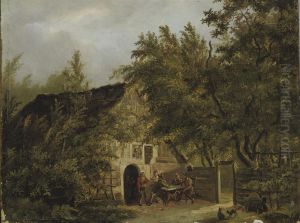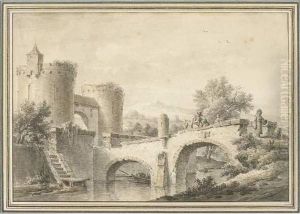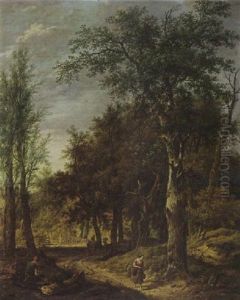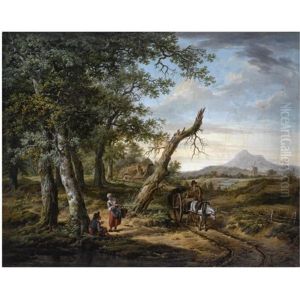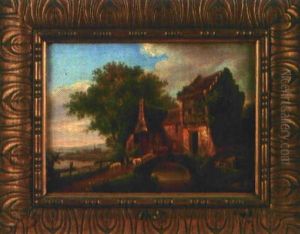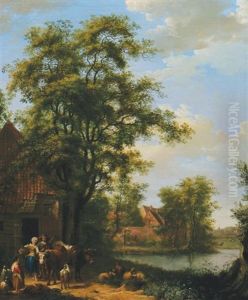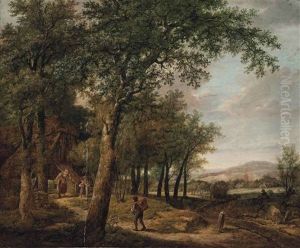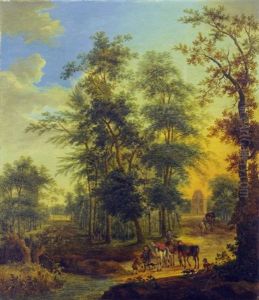Pieter Barbiers Paintings
Pieter Barbiers was a Dutch painter and draughtsman born on March 23, 1749, in Amsterdam, Netherlands. He was a member of a large family of artists, which included his father, Pieter Barbiers the Elder, and his brothers. Barbiers started his artistic journey under the tutelage of his father and later continued his studies with the landscape painter Jurriaan Andriessen.
Barbiers was primarily known for his landscape paintings, which often included architectural elements and figures. He was adept at capturing the interplay of light and shadow, which brought a dynamic quality to his works. His style was influenced by the Dutch Romantic tradition, which was prevalent during his time.
In addition to landscapes, Barbiers also produced a number of decorative works for the interiors of various buildings, such as theaters and town halls. He collaborated with other artists on some of these projects. His versatility also extended to designing sets for the Amsterdam theatre, and he was quite active in the city's art community.
Throughout his career, Barbiers exhibited his works at various venues and was appreciated for his artistic skills. Despite being less known today, during his lifetime, he enjoyed a considerable reputation and contributed to the Dutch artistic scene of the late 18th and early 19th centuries.
Pieter Barbiers passed away on October 12, 1842, in Amsterdam. While Barbiers might not be as well-remembered as some of his contemporaries, his works remain a testament to the Dutch landscape tradition and are preserved in several Dutch museums, including the Amsterdam Museum.




